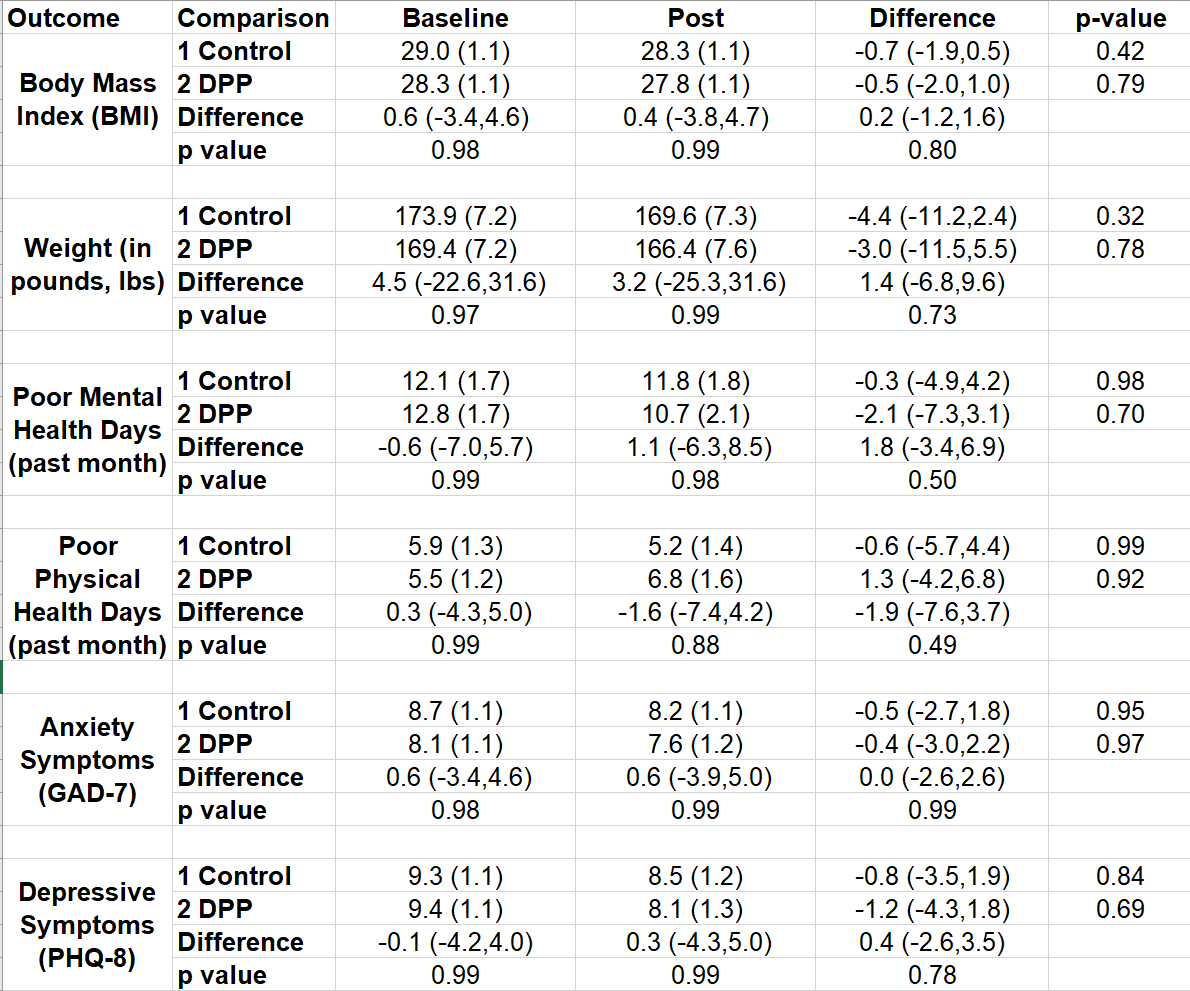Endocrinology 1
Session: Endocrinology 1
301 - Evaluation of a Student-Tailored Version of the National Diabetes Prevention Program: A Randomized Pilot Trial among Vulnerable Undergraduates
Sunday, April 27, 2025
8:30am - 10:45am HST
Publication Number: 301.4747
Lauren E. Wisk, University of California, Los Angeles David Geffen School of Medicine, Los Angeles, CA, United States; Kate Diaz Roldan, University of California, Los Angeles David Geffen School of Medicine, Covina, CA, United States; Angelique Rubio, UCLA, Highland, CA, United States; Nicholas Jackson, University of California, Los Angeles David Geffen School of Medicine, Los Angeles, CA, United States; Juliet Cushing, University of California, Los Angeles David Geffen School of Medicine, Los Angeles, CA, United States; Valerie Kryger, University of California, Los Angeles David Geffen School of Medicine, Alhambra, CA, United States; Samantha Soetenga, UCLA Recreation, Los Angeles, CA, United States; Tannaz Moin, University of California, Los Angeles David Geffen School of Medicine, Los Angeles, CA, United States

Lauren E. Wisk, PhD (she/her/hers)
Assistant Professor
University of California, Los Angeles David Geffen School of Medicine
Los Angeles, California, United States
Presenting Author(s)
Background: Given that 1-in-4 young adults in the US are now living with prediabetes, there is a clear need to adapt evidence-based programs, such as the National Diabetes Prevention Program (DPP) to address this emerging public health crisis.
Objective: We conducted a pilot RCT to test a student-tailored version of the DPP among undergrads during the 2023-24 academic year.
Design/Methods: Students meeting criteria for the traditional DPP (i.e., risk factor for type 2 diabetes and BMI≥25 [≥23 if Asian]) were recruited and randomized (age- and sex-stratified) to the DPP intervention versus active control (alcohol use, study skills, and financial literacy interventions). Those enrolled in the DPP received up to 18 in-person sessions covering healthy eating, physical activity, and stress management (traditional curriculum) with enhancements that were developed via stakeholder engagement (e.g., access to fitness passes, gamification, small group learning). Participants completed surveys and weight measurements at baseline (Fall 2023) and program completion (Spring 2024). Mixed effect regression assessed changes in key outcomes (BMI, mental health) from pre- to post-intervention, comparing intervention (Tx) and control (Cn) participants.
Results: 80 participants were enrolled into the trial; 59 (74%; mean age 19.0) with outcome data were included in these analyses. Participants were female (71%), non-white (61%), living on campus (71%), and had parents with at least a bachelor’s degree (55%). Tx and Cn participants (N=30 and 29, respectively) were statistically similar except that Tx participants were less likely to be white (27% vs 52%, p=0.049). BMI was similar between Tx and Cn at baseline (28.3±1.1 vs 29.0±1.1, p=0.98) and did not significantly differ at follow-up (27.8±1.1 vs 28.3±1.1, p=0.99). Self-reported past-month poor mental health days decreased more for Tx (12.8±1.7 at baseline to 10.7±2.1 at follow-up) compared to Cn (12.1±1.7 to 11.8±1.8), suggesting improved mental health in the intervention, though this change was not significantly different between groups (p=0.50). Similarly, symptoms of depression (PHQ-8) decreased (non-significantly, p=0.78) by a greater amount for Tx (9.4±1.1 to 8.1±1.3) than Cn (9.3±1.1 to 8.5±1.2).
Conclusion(s): Though we did not find evidence of BMI change (primary outcome) in this pilot, we saw trends toward improved mental health (secondary outcome) for those randomized to receive a tailored group-based behavioral intervention focused on type 2 diabetes prevention. As this pilot was underpowered, these results should be replicated in a subsequent, fully powered trial.
Results of Mixed Effects Linear Regression
 Table shows scores for each outcome (BMI, weight, poor mental health days, poor physical health days, GAD-7, PHQ-8) by group (treatment/DPP and control) and time (baseline and follow-up/post), as well as differences over time and within groups, derived from the mixed effects regression models. Models control for group, time, group by time interaction (the measure of the effect of the intervention relative to control), and repeated measures within individuals.
Table shows scores for each outcome (BMI, weight, poor mental health days, poor physical health days, GAD-7, PHQ-8) by group (treatment/DPP and control) and time (baseline and follow-up/post), as well as differences over time and within groups, derived from the mixed effects regression models. Models control for group, time, group by time interaction (the measure of the effect of the intervention relative to control), and repeated measures within individuals. 
